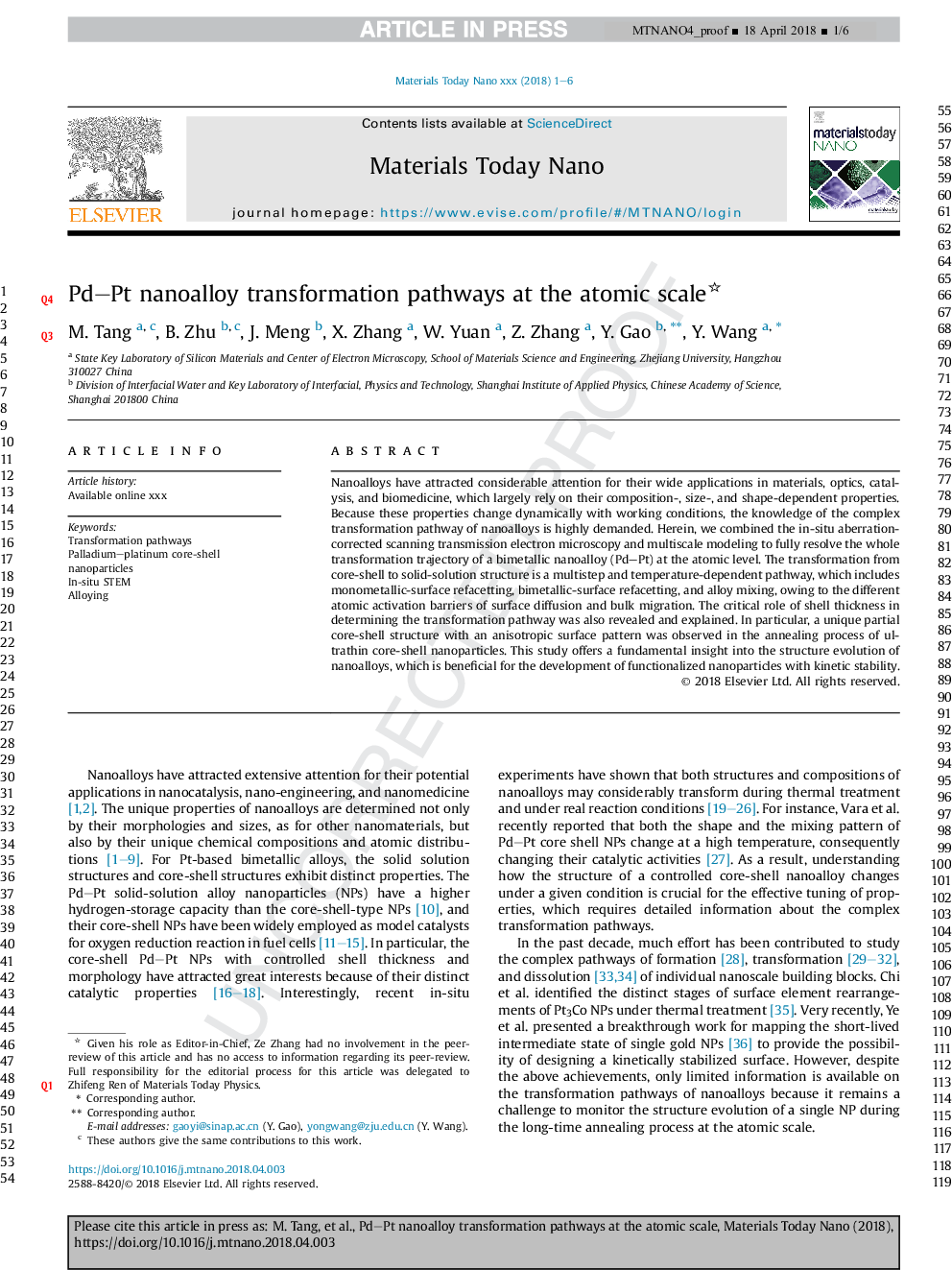| Article ID | Journal | Published Year | Pages | File Type |
|---|---|---|---|---|
| 6482696 | Materials Today Nano | 2018 | 6 Pages |
Abstract
Nanoalloys have attracted considerable attention for their wide applications in materials, optics, catalysis, and biomedicine, which largely rely on their composition-, size-, and shape-dependent properties. Because these properties change dynamically with working conditions, the knowledge of the complex transformation pathway of nanoalloys is highly demanded. Herein, we combined the in-situ aberration-corrected scanning transmission electron microscopy and multiscale modeling to fully resolve the whole transformation trajectory of a bimetallic nanoalloy (Pd-Pt) at the atomic level. The transformation from core-shell to solid-solution structure is a multistep and temperature-dependent pathway, which includes monometallic-surface refacetting, bimetallic-surface refacetting, and alloy mixing, owing to the different atomic activation barriers of surface diffusion and bulk migration. The critical role of shell thickness in determining the transformation pathway was also revealed and explained. In particular, a unique partial core-shell structure with an anisotropic surface pattern was observed in the annealing process of ultrathin core-shell nanoparticles. This study offers a fundamental insight into the structure evolution of nanoalloys, which is beneficial for the development of functionalized nanoparticles with kinetic stability.
Keywords
Related Topics
Physical Sciences and Engineering
Chemistry
Chemistry (General)
Authors
Min Tang, Beien Zhu, Jun Meng, Xun Zhang, Wentao Yuan, Ze Zhang, Yi Gao, Yong Wang,
